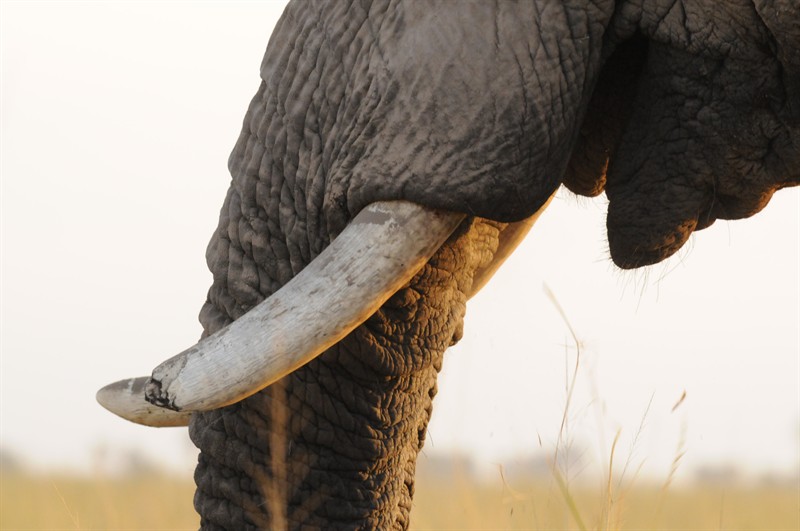Laudable Efforts To Combat Illegal Ivory Trade By China
By Marianne de Nazareth
07 January, 2014
Countercurrents.org

Six tonnes of confiscated ivory were destroyed at a landmark event by the authorities in China, in an effort to combat the illegal trade in elephant tusks. The seized ivory was fed into crushing machines in the southern city of Dongguan, in what was described as the first public destruction of ivory in China. Much of the illegally obtained ivory ends up in China, the world’s biggest market for the smuggled-in material. And although authorities here have stepped up anti-trafficking efforts in recent years, they have failed to turn the tide.
According to UNEP, this week, China conducted a ceremony that is said underscored its determination to oppose the trade, with workers dressed in dungarees, pushing in piles of weighty tusks and hundreds of small, intricately carved ornaments into a large, noisy green crushing machine, in front of a crowd of local officials, foreign diplomats, conservationists and journalists in Dongguan a small town, just outside the southern city of Guangzhou.
China has been known to allow a legal, licensed trade in ivory. Ivory carving is considered as part of its traditional culture and there are dozens of workshops allowed to operate, mainly using a stockpile of ivory it bought in 2008. That was the era when elephant numbers were relatively healthy and limited international trade in ivory was allowed.
According to the Convention on the International Trade in Endangered Species of Fauna and Flora (CITES), elephant poaching in Africa could lead to local extinctions if the present killing rates continue. The situation is particularly acute in Central Africa, where the estimated poaching rates are twice the continental average.
African Bush Elephants (Loxodonta africana), are scattered throughout sub-Saharan Africa. They are the largest living terrestrial animals. Male African elephants can reach a height of 4 m and weigh 7,000 kg. These animals have several distinctive features, including a long trunk used for many purposes, particularly for grasping objects. Their incisors grow into tusks, which serve as tools for moving objects and digging and as weapons for fighting. The elephant's large ear flaps help to control the temperature of its body.
African elephants have larger ears and concave backs while Asian elephants have smaller ears and convex or level backs. Elephants are herbivores and can be found in different habitats including savannahs, forests, deserts and marshes. They prefer to stay near water and are considered to be keystone species due to their impact on their environments. The African elephant is facing the greatest crisis in decades. Reports of mass elephant killings in the media vividly illustrate the situation across many African elephant range States and its mainly for their ivory tusks.
UN Under-Secretary General and Executive Director of the UN Environment Programme (UNEP) Achim Steiner said, “We congratulate China and the State Forestry Administration on this milestone event.”
“The largest remaining land mammal on the planet is facing one of the greatest crises to hit the species in decades. The latest CITES data estimates that some 47,000 animals were killed in Africa in 2011 and 2012.”
“Yet, there is reason for optimism. International cooperation is paving the way towards improved law enforcement and increased efforts to reduce demand. These efforts need to be stepped up and strengthened to produce the desired results.”
“We have also seen the destruction of ivory stockpiles across range, transit and demand states: in the Philippines, the Gabon, the US and China among others. As well as create critical public awareness, such actions send a clear message that wildlife crime will not be tolerated," he added.
Increased poaching and loss of habitats are decimating African elephant populations – especially in Central African countries – according to a report entitled Elephants in the Dust: The African Elephant Crisis, released last March. The UN estimates that over 17,000 elephants were illegally killed in monitored sites in 2011 alone and actual figures may be much higher.
Secretary-General of CITES John E. Scanlon, speaking at the event, said, “Despite considerable efforts to combat wildlife crime, it continues to be a problem worldwide. Illegal trade in elephant ivory is having a devastating impact on the African elephant, and it also poses a threat to people and their livelihoods – it must stop. China, and the entire international community, are determined to end this illicit trade."
The Elephants in the Dust report – produced by UNEP, CITES, the International Union for Conservation of Nature (IUCN), and the Wildlife Trade Monitoring Network (TRAFFIC) – says that the illegal ivory trade has tripled since 1998. Criminal networks are responsible for the illegal trafficking of ivory between Africa and Asia. Large-scale seizures of ivory destined for Asia have more than doubled since 2009 and reached an all-time high in 2011.
The international community is looking at measures to address the crisis, including collaborative action to combat the illegal trade in wildlife and timber, which would include:
• Improved law-enforcement across the entire illegal ivory supply chain;
• Strengthened national legislative frameworks;
• Training of enforcement officers in the use of tracking, intelligence networks and innovative techniques, such as forensic analysis;
• Better international collaboration across range states, transit countries and consumer markets; and
• Action to fight collusive corruption, identifying syndicates and reducing demand.
The event in China will send strong signals across the illegal ivory chain, that China too is unwilling to buy ivory and will be cracking own forcefully on poachers and illegal wildlife poaching syndicates.
( Marianne de Nazareth freelance science and environment journalist, adjunct faculty St. Joseph’s PG College of Media Studies, Bangalore, India)
Comments are moderated
